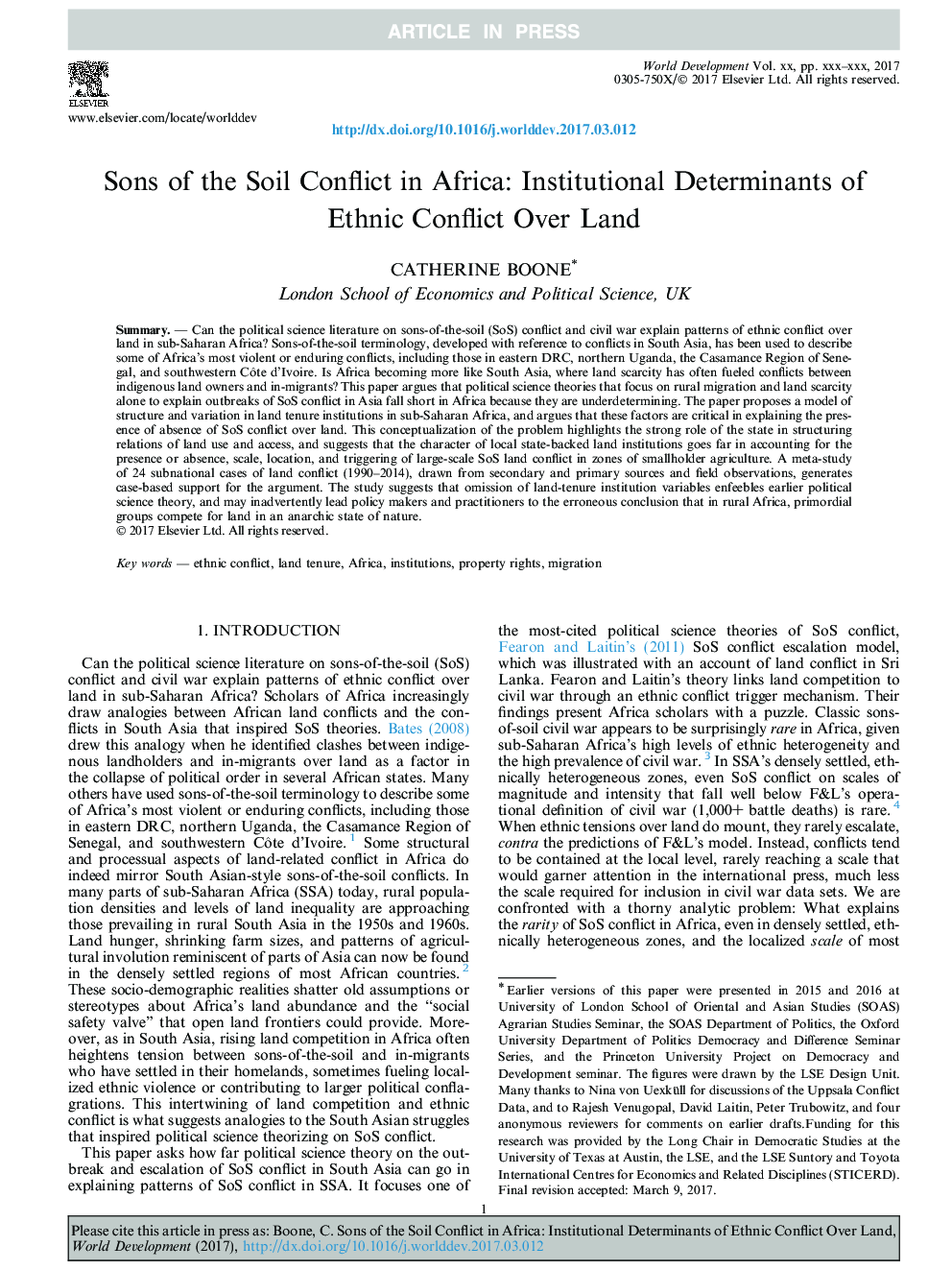| Article ID | Journal | Published Year | Pages | File Type |
|---|---|---|---|---|
| 5105062 | World Development | 2017 | 18 Pages |
Abstract
Can the political science literature on sons-of-the-soil (SoS) conflict and civil war explain patterns of ethnic conflict over land in sub-Saharan Africa? Sons-of-the-soil terminology, developed with reference to conflicts in South Asia, has been used to describe some of Africa's most violent or enduring conflicts, including those in eastern DRC, northern Uganda, the Casamance Region of Senegal, and southwestern Côte d'Ivoire. Is Africa becoming more like South Asia, where land scarcity has often fueled conflicts between indigenous land owners and in-migrants? This paper argues that political science theories that focus on rural migration and land scarcity alone to explain outbreaks of SoS conflict in Asia fall short in Africa because they are underdetermining. The paper proposes a model of structure and variation in land tenure institutions in sub-Saharan Africa, and argues that these factors are critical in explaining the presence of absence of SoS conflict over land. This conceptualization of the problem highlights the strong role of the state in structuring relations of land use and access, and suggests that the character of local state-backed land institutions goes far in accounting for the presence or absence, scale, location, and triggering of large-scale SoS land conflict in zones of smallholder agriculture. A meta-study of 24 subnational cases of land conflict (1990-2014), drawn from secondary and primary sources and field observations, generates case-based support for the argument. The study suggests that omission of land-tenure institution variables enfeebles earlier political science theory, and may inadvertently lead policy makers and practitioners to the erroneous conclusion that in rural Africa, primordial groups compete for land in an anarchic state of nature.
Related Topics
Social Sciences and Humanities
Economics, Econometrics and Finance
Economics and Econometrics
Authors
Catherine Boone,
